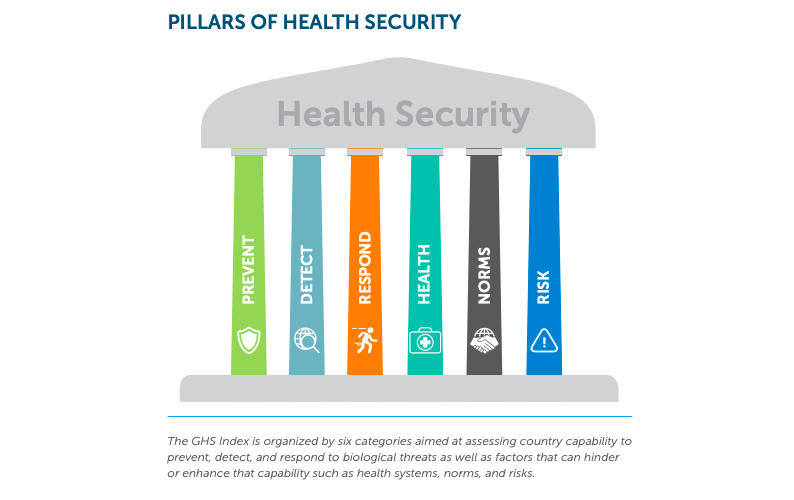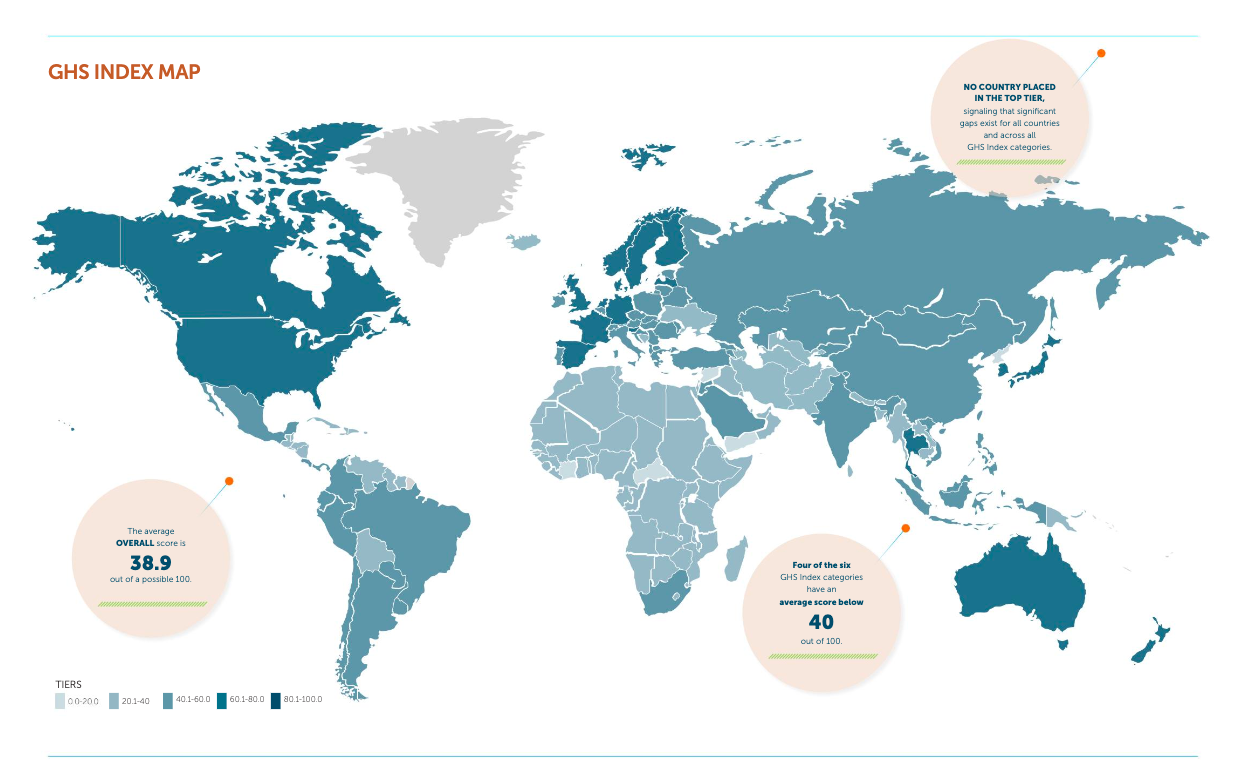Int’l Day of Epidemic Preparedness: World ‘dangerously unprepared’ for health crises
MANILA, Philippines—As infectious diseases like COVID-19 present a “clear and present danger,” the United Nations (UN) said the world would have to escalate efforts to prevent health crises that are fatal.
This year, as the 2nd International Day of Epidemic Preparedness was celebrated, UN secretary general António Guterres said since diseases, like COVID-19, spread like wildfire, “an outbreak anywhere is a potential pandemic everywhere.”
READ: The test of pandemic preparedness
Guterres, who said COVID-19 will not be the last pandemic, explained that an infectious disease can sweep the world and send health care systems to the brink. “Let’s give this issue the focus, attention and investment it deserves,” he said.
READ: COVID-19 pandemic will not be the last: WHO chief
This, he said, is why there’s an exigent need to prepare for the outbreak of infectious diseases and prevent a crisis like the one brought by COVID-19 which has already infected 203 million and killed 3.78 million people worldwide.
With this goal, the UN and World Health Organization last year declared Dec. 27 as the International Day of Epidemic Preparedness to highlight the need for resilient and strong health care systems.
Guterres said in 2020 that health crises threaten to overwhelm already “overstretched” health care systems, derail global resource chains and seed disproportionate devastation of people’s livelihoods.
He explained that without strengthened readiness, the next epidemics could exceed the intensity and gravity of previous outbreaks of infectious diseases, even of COVID-19 which was first detected in China in 2019.
COVID-19, Guterres said, revealed “our failure to learn the lessons” of recent health crises like SARS, avian influenza, zika and ebola.
Here’s a peek at the previous outbreaks listed by Healthline, a United States-based website:
- SARS (Severe Acute Respiratory Syndrome)
A type of coronavirus with symptoms like fever, respiratory symptoms, cough and malaise. This spreads through “respiratory droplets” and was first detected in 2002 in China. It infected 8,098 and killed 774.
- H1N1
The H1N1 strain, which was considered as a “new type of flu,” was first detected in Mexico and the United States in 2009. It infected 24 percent of the global population and killed 284,000.
- Zika
The WHO, in 2016, declared that the recent relation of Zika, a mosquito-transmitted infection, with microcephaly and neurological disorders constitutes a Public Health Emergency of International Concern.
- Ebola
Ebola, which was “extremely deadly,” was first detected in 2013 and Guinea. It has symptoms like fever, aches and pains, weakness, diarrhea, and vomiting. It infected 28,652 and killed 11,325.
With COVID-19 still a threat, Guterres said that while the world responds to this health crisis, there was a need to prepare for the next one which means increasing investments in early detection and exigent response plans.
RELATED STORY: Go pushes measures to fill gaps in pandemic response, boost preparedness
‘Not prepared’
The problem, however, is that the world is still “dangerously unprepared” to address threats of the next health crises which could have severely devastating effects on people’s lives.
This was revealed in the 2021 Global Health Security (GHS) Index which rates the “capacities” of 195 countries necessary to prevent, detect, and respond to biological threats like COVID-19.
The GHS Index, which was released last Dec. 9, assesses nation’s health security and capacities through 37 indicators and six “Pillars of Health Security” that were identified as these:
- Prevention: ability to stop the emergence or release of pathogens
- Detection and Reporting: ability to detect and report epidemics of potential international concern
- Rapid Response: ability to mitigate the spread of an epidemic
- Health System: having enough facilities and manpower to treat the sick and protect health workers
- Commitments to Improving National Capacity, Financing and Global Norms
- Risk Environment: the overall risk environment and vulnerability of a country to biological threats.
This year, the average score was 38.9 out of 100, which is essentially almost the same as in 2019–40.2. “Looking at overall GHS Index scores, no country scored in the top tier5 of the GHS Index,” it said.
Since no country was able to obtain a top tier score, the GHS Index said it showed that significant gaps exist for all countries and across all GHS Index pillars. It explained that preparedness is still significantly weak in all countries.
RELATED STORY: Med community slams gov’t ‘incompetence’ in pandemic response
It said the overall prevention score is 28.4 out of 100, making it the lowest-rating 2021 GHS Index pillar–detection and reporting (32.3); rapid response (37.6); health system (31.5); commitments (47.8); and risk environment (55.8).
The GHS Index showed that 70 percent of 195 countries show a lack of health capacity in clinics, hospitals, and community centers. Only 25 percent—49 countries—have published new health workforce strategy in the last five years.
Those in the first 10 were the United States (75.9), Australia (71.1), Finland (70.9), Canada (69.8), Thailand (68.2), Slovenia (67.8), United Kingdom (67.2), Germany (65.5), South Korea (65.4), and Sweden (64.9).
PH preparedness
While the Philippines, the GHS Index said, improved by 2.2 in 2021, it is 57th with a 45.7 score. The increase was related to the government’s commitment to share its data regarding COVID-19.
“Only 37 percent of countries have made a public commitment to share surveillance data, and only five [Brunei, Indonesia, Malaysia, the Philippines, and Singapore] made commitments to share data specifically for COVID-19,” it said.
Here’s how the Philippines fared in GHS Index’s pillars:
- Prevention: 89th; 27.7
- Detection and Reporting: 33rd; 52.6
- Rapid Response: 73rd; 38.8
- Health System: 54th; 46.5
- Commitments to Improving National Capacity, Financing, and Global Norms: 57th; 55.9
- Risk Environment: 108th; 52.8
The GHS Index, which was released by the Johns Hopkins Center for Health Security, said 155 out of 195 countries have not allocated national resources in the last three years to improve capacity to address epidemic threats.
Out of the 40 which have placed resources to address a health crisis, only two low-income countries have evidence of allocating finances. It likewise revealed that 90 failed to fulfill their financial contribution to the WHO.
Guterres said the world needs to strengthen primary health care at the local level to prevent collapse “ensuring equitable access to lifesaving interventions, like vaccines for all people and achieving universal health coverage.”
He said that with global solidarity, every country would have a fighting chance “to stop infectious diseases in their tracks”.
The GHS Index recommended these steps for countries to prepare for epidemics:
- Prioritize the building and maintaining of health security capacities in national budgets. These are not just beneficial for health security emergencies but are important for responding to routine health threats and can provide important benefits to countries’ overall health and development.
- Conduct assessments using findings from the 2021 GHS Index to identify risk factors and capacity gaps and develop a plan to address them.
- Develop, cost and make financial arrangements to support National Action Plans for Public Health Security if they have completed WHO Joint External Evaluation (JEE).
- Undertake a JEE to better understand gaps. Data from the 2021 GHS Index may be used to update JEE data and supplement it with additional data regarding health systems and risk factors.
- Be more transparent with capacities and risk factors. National decision makers need readily available information about their countries’ plans and other capacities, and increased transparency is essential for global prevention, detection, and response to epidemics and pandemics.
- Conduct comprehensive after-action COVID-19 pandemic reports to learn from this crisis and ensure that capacities developed during the pandemic are expanded and sustained for future public health emergencies.
TSB
For more news about the novel coronavirus click here.
What you need to know about Coronavirus.
For more information on COVID-19, call the DOH Hotline: (02) 86517800 local 1149/1150.
The Inquirer Foundation supports our healthcare frontliners and is still accepting cash donations to be deposited at Banco de Oro (BDO) current account #007960018860 or donate through PayMaya using this link.



